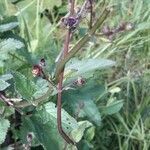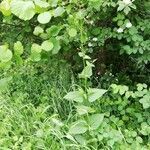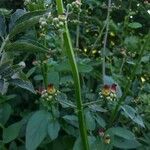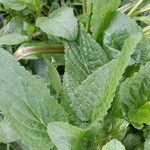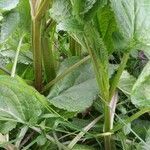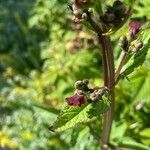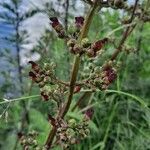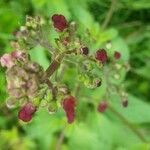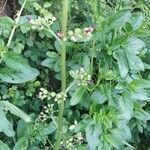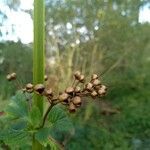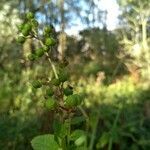A small plant. It grows 60-100 cm tall. It spread 90-120 cm wide. The stems are stiff and square. It has smooth heart shaped leaves. They are opposite and have some teeth. They are 25 cm long. The flowers are small and fig shaped. They are rounded and reddish brown. They have a drooping lip and yellow-green inside.
